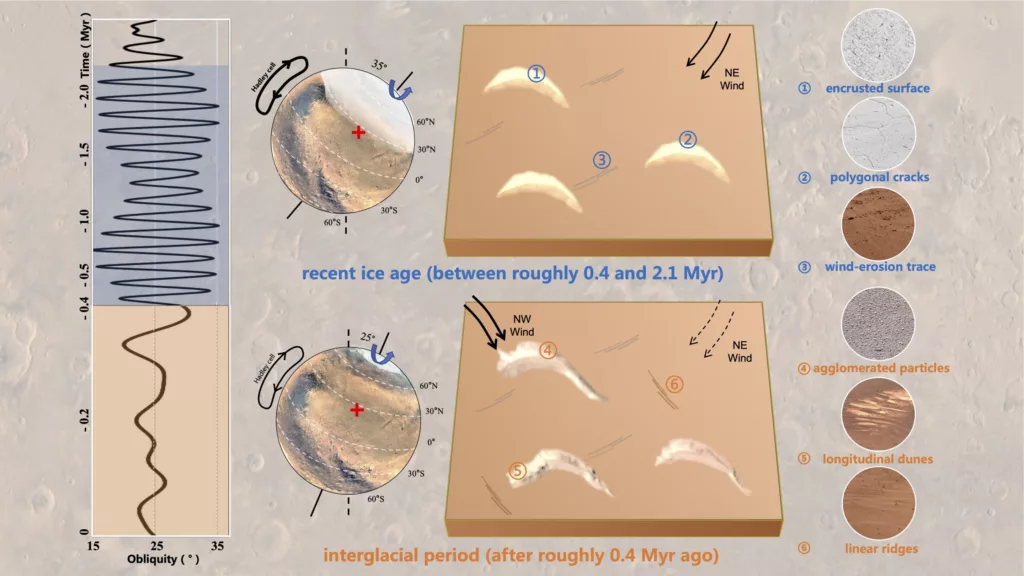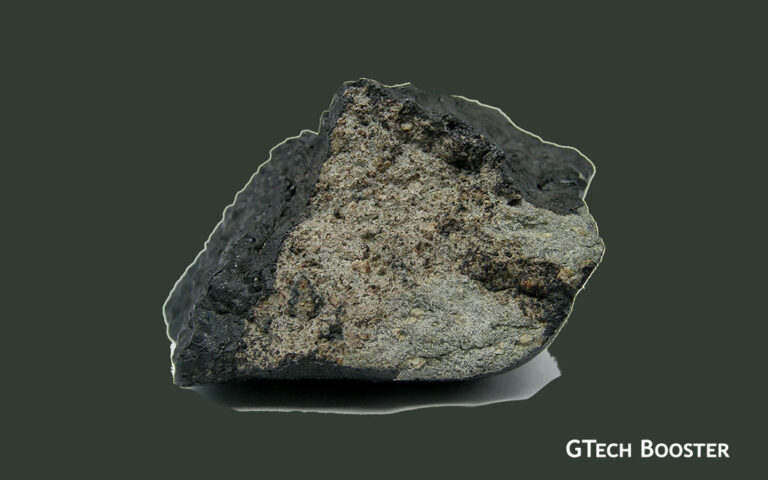Zhurong Mars collected data from sand dunes on Mars suggest Ice Age ended drastically 400,000 years ago

According to a study published in the scientific journal Nature, the Chinese rover Zhurong Mars collected data from sand dunes on the surface of Mars and found that the Martian Ice Age ended in extreme fashion about 400,000 years ago. The research was carried out in a region 300 km in diameter and known as Utopia Planitia. The Zhurong rover of China’s first Mars mission, Tianwen-1, successfully landed in southern Utopia Planitia on Mars, considered the largest impact basin in the Solar System.
The detailed analysis of data obtained by the Zhurong rover of dunes located on the southern Utopian Plain of Mars suggests that the planet underwent a shift in prevailing winds after the planet’s last ice age. Additionally, the Utopia Planitia crater is widely thought to have once hosted an ancient ocean, which is why China’s space administration chose it as the landing site for the Zhurong rover.
In addition to data from the China National Space Administration (CNSA) rover, the study used high-resolution observations from China’s Tianwen-1 Mars orbiter. The research points out that the dunes have been eroded over thousands of years and have formed materials called transverse wind ridges (TARs).

Until then, researchers had not understood how these ridges, observed in the lower middle latitudes of the planet, formed. Fortunately, the new study offers a little more clarity to this question: TARs began to form between 2.1 million years ago and 400,000 years ago. After this period, dark ridges began to emerge.
The research was carried out in an international collaboration of teams from the National Astronomical Observatories of the Chinese Academy of Sciences (NAOC), the Institute of Geology and Geophysics, and the Tibetan Plateau Research Institute of the Chinese Academy of Sciences (CAS); in collaboration with researchers from Brown University in the United States.
The findings from Zhurong Mars collected data from sand dunes on the surface of Mars suggest that the planet underwent a shift in prevailing winds after the planet’s last ice age, which eroded the Martian dunes. The observations from the Zhurong rover have revealed that Martian sand dunes were likely formed by drastic shifts in prevailing winds. The researchers used data obtained by the Navigation and Terrain Camera (NaTeCam), the Multispectral Camera (MSCam), and the Mars Surface Composition Detector (MarSCoDe) aboard the Zhurong rover to study the different-scale surface features and mineral compositions of dunes in the landing area. The Zhurong rover’s latest findings on Martian dunes have shed light on the geological and climate changes that the planet underwent about 400,000 years ago. Additionally, the Zhurong rover has found evidence of liquid water at low Martian latitudes, indicating potentially habitable environments, contradicting previous beliefs that water could only exist in solid or gaseous states on Mars. The study was led by Prof. Xiaoguang Qin from the Institute of Geology and Geophysics (IGG) of the Chinese Academy of Sciences (CAS), and NAOC researcher Li Chunlai, who led the study on the Mars ice age.

Ice Age on Mars
The estimation of the date of formation of the TARs was made based on the number of craters on the tops of the dunes. Despite this, according to scientists, the most striking thing is that the dates coincide with the records of the beginning and end of the last ice age that happened on Mars.
The research suggests that the ice age ended after an extreme change in the angle of Mars’ rotation, causing the formation of the dark ridges after the change in the direction of the winds in the lower middle latitudes. Currently, the planet is going through a geological era known as the ‘Amazonian climate’.
“Understanding the Amazonian climate is essential to explain the current Martian landscape, reservoirs of volatile matter, and atmospheric state, and to relate these current observations and active processes to models of Mars’ ancient climate. Observations of Mars’ current climate can help refine physical models of Martian climate and landscape evolution, and even form new paradigms,” said NAOC associate and principal investigator of the study, Li Chunlai.















